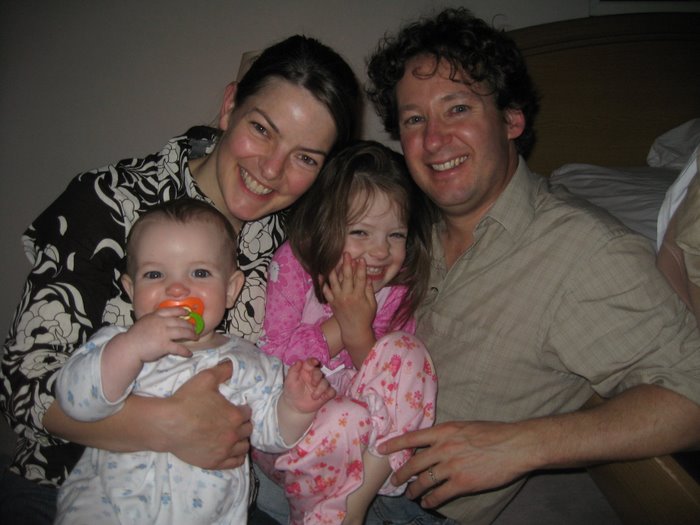http://en.wikipedia.org/wiki/Fushimi_Inari-taisha
This shrine complex consists of five shrines that are scattered across Inari-"yama" or mountain. The pathway that connects the shrines is lined by hundreds of orange torii.

Here's a side view of the torii pathway. It was overwhelmingly beautiful.

To pray for a loved one's health, it is tradition to fold origami cranes and string them in long chains. Here are some of the cranes left as votives at Fushimi-Inari Shrine.

To pray for a loved one's health, it is tradition to fold origami cranes and string them in long chains. Here are some of the cranes left as votives at Fushimi-Inari Shrine.
One can also buy a wooden votive to write wishes on. These were in the shape of fox heads. The fox is considered the messenger of Inari, the god of cereal grains. The Japanese consider the fox to be a sacred and mystical beast. It was once believed that foxes were capable of possessing humans. They gain entrance into their host by slipping in under one's fingernails...

Three foxes...(I know---a horrible misogynist-70's-ish pun, but I couldn't help myself). In the foxes mouths you can see a block-like key to the rice granary and a rice ball.

The view from inside the torii pathways. I first caught a glimpse of this shrine in Sofia Coppola's movie, "Lost in Translation". If you haven't seen it already--you should. Most of it was shot on location in our neighborhood of Shibuya and in a few key shrines in Kyoto.

Three foxes...(I know---a horrible misogynist-70's-ish pun, but I couldn't help myself). In the foxes mouths you can see a block-like key to the rice granary and a rice ball.

The view from inside the torii pathways. I first caught a glimpse of this shrine in Sofia Coppola's movie, "Lost in Translation". If you haven't seen it already--you should. Most of it was shot on location in our neighborhood of Shibuya and in a few key shrines in Kyoto.




No comments:
Post a Comment